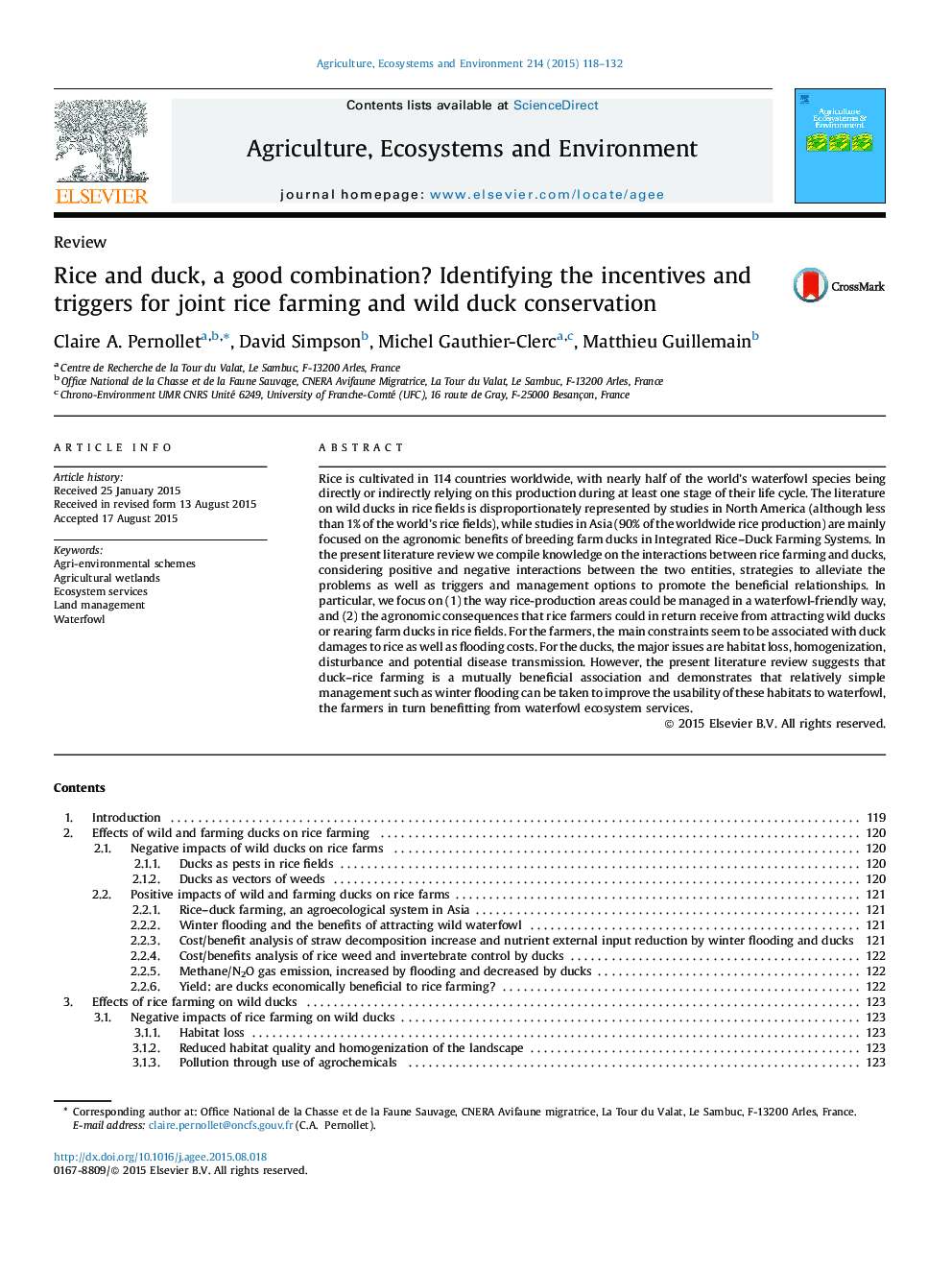| Article ID | Journal | Published Year | Pages | File Type |
|---|---|---|---|---|
| 2413617 | Agriculture, Ecosystems & Environment | 2015 | 15 Pages |
•We compile knowledge on the positive and negative interactions between rice farming and ducks.•We provide means by which mutually positive interactions could be promoted.•The main constraints for the farmers are associated with duck damages to rice as well as flooding costs.•The major issues for the ducks are habitat loss, homogenization, disturbance and potential disease transmission.•Winter ricefield flooding provides benefits to ducks and farmers.
Rice is cultivated in 114 countries worldwide, with nearly half of the world’s waterfowl species being directly or indirectly relying on this production during at least one stage of their life cycle. The literature on wild ducks in rice fields is disproportionately represented by studies in North America (although less than 1% of the world’s rice fields), while studies in Asia (90% of the worldwide rice production) are mainly focused on the agronomic benefits of breeding farm ducks in Integrated Rice–Duck Farming Systems. In the present literature review we compile knowledge on the interactions between rice farming and ducks, considering positive and negative interactions between the two entities, strategies to alleviate the problems as well as triggers and management options to promote the beneficial relationships. In particular, we focus on (1) the way rice-production areas could be managed in a waterfowl-friendly way, and (2) the agronomic consequences that rice farmers could in return receive from attracting wild ducks or rearing farm ducks in rice fields. For the farmers, the main constraints seem to be associated with duck damages to rice as well as flooding costs. For the ducks, the major issues are habitat loss, homogenization, disturbance and potential disease transmission. However, the present literature review suggests that duck–rice farming is a mutually beneficial association and demonstrates that relatively simple management such as winter flooding can be taken to improve the usability of these habitats to waterfowl, the farmers in turn benefitting from waterfowl ecosystem services.
